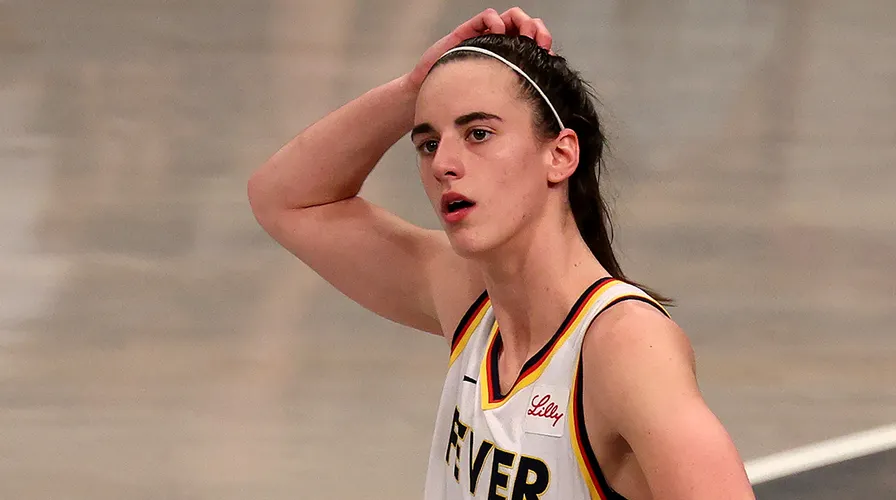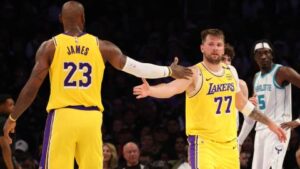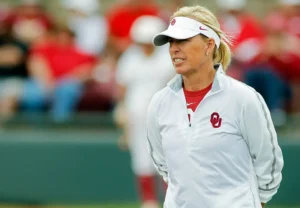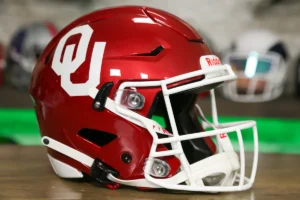
Everyone’s Scheming on the Caitlin Clark Beat
INDIANAPOLIS — In 49 states, it’s just basketball … and in this state, it’s also just basketball. At least, that’s how Caitlin Clark might see it. Since joining the Indiana Fever, she has made an effort to put things in perspective. According to her, there’s nothing particularly unusual about her situation.
An hour and a half before her home debut Thursday night against the New York Liberty, a room full of reporters is eager to emphasize Clark’s uniqueness, but to no avail. The rapid transition from college to the WNBA must be overwhelming, right? “It’s been the same since the league started. Every other rookie has gone through it,” she says. The Fever play their first seven games in 12 days, a steeper learning curve compared to the three or four practices between college games. “But that’s the case for every team.” Yes, talking to the media three times a day can be exhausting, but “it’s something we all do, and other players in the league do it too. It’s the same for everybody.” Really, being Caitlin Clark is just like being anyone else. “Just like you have your jobs and responsibilities, it’s the same for me.”
Sure, it’s just like how thousands of people fill an arena to watch you work, and how they add “Effect” and “-onomics” to your name. They consider everything you do a referendum on your industry. And, as one TV reporter near me muses, you might be the biggest name in town since Peyton Manning. It’s just like that. To see a young woman perform her job, I’m joined by Rick Carlisle, Myles Turner, the newly retired Lisa Bluder, 50-odd media members, some 17,000 fans, and the unmistakably sunburnt arms of Pat McAfee, who sits courtside in a Fever muscle tank.
As a women’s basketball fan, I’m used to feeling like an intruder. The league has long been criticized for playing when “the boys weren’t using the gym.” At WNBA games, it’s still common to see a court with another team’s name and logo; women should be grateful for what they have, after all. But this is the Fever’s gym. The crowd wears Fever gear and new Caitlin Clark jerseys, bought from long, snaking lines at the team store. The following night, I return for a men’s game with higher stakes. Outside, the banners have new faces—Aliyah Boston swapped for Tyrese Haliburton, Kelsey Mitchell for Pascal Siakam—but inside, the stairs are still striped in Fever red.
The Fever’s gym is designed to evoke Indiana’s basketball tradition, and the crowd, searching for an old feeling, lives and dies with the rookie star. Clark has cultivated that reputation over the last four years, but the fans are waiting for the held breath to be punctuated by something. The Liberty assign her to Betnijah Laney-Hamilton, whose success story incidentally begins with being cut by the Fever. The All-Defensive guard forces Clark off the ball, and her few shots aren’t falling. After her fourth three-point miss, she puts her arms on her head, maybe in horror, or possibly to keep it from exploding.
Clark has always worn her emotions on her face and shoulders. Her head becomes a prop, smacked after a bad pass, hidden in her hands when a shot rims out. Two minutes into the second quarter, with just two points, she checks out and thwacks her chair with a towel. Some camera operators behind me chat. “It’s like—though not the best comparison—Peyton Manning throwing the most interceptions as a rookie.”
Basketball is chaotic to cover in person; it helps to have announcers and producers weaving together the game’s parts. Between analyzing Clark’s body language, noting early-season rotations, and confirming that’s Jim Boylen next to Rick Carlisle (it is), I lose track of the score. I look up, and the Liberty’s lead has ballooned to 23.
By the fourth quarter, McAfee wonders if the Liberty are the “greatest team ever assembled.” He films his ESPN show nearby, and Clark has taken him on a women’s basketball educational journey that’s almost charming in its vacuity. “Smooth,” he says about DeWanna Bonner after Clark’s first game against the Sun. “We’re talking about—there’s some bucket-getters on that other team I’ve never heard of.” Later, he and his crew mull a Fever coaching change, even proposing a trade for Aces coach Becky Hammon. Kids say the darndest things.
McAfee’s idle riffing contains a kernel of truth: Clark makes basketball look difficult tonight, while Breanna Stewart makes it look easy. Stewart’s uncanny turnaround jumper, limbs akimbo, still works. At her best, Stewart turns opponents into playground children, almost relieving to see her playing like this again, a champion of the familiar.
The Indianapolis crowd craves the familiar Clark, the one who blows by defenders and pulls up from the logo. The only entertainment at the Fever logo comes from Frisbee dogs during halftime. Transition offense is nearly impossible with the Fever’s current defense, but occasionally, the Clark they know reappears, and the arena buzzes. She checks out with nine points, seven rebounds, six assists, and three turnovers, seven fewer than in her season opener.
Clark, as a media phenomenon, brings three groups together: women’s basketball reporters, Iowa-based writers and photographers still following her, and Indiana sports journalists. (Not everyone has adapted well: An Indianapolis Star columnist responsible for a painfully awkward exchange at Clark’s introductory press conference is now banned from covering her.) After the game, waiting for insights from players and coach Christie Sides, the women’s basketball group shares a leaguewide joke: The Fever start the season against the WNBA’s three best teams, playing the Sun and Liberty twice each. Two games into her career, Clark has faced the league’s reigning MVP and the second-place finisher. She’ll play the Liberty again on Saturday. A local columnist notes wearily that Peyton Manning set the rookie interception record.
This is another form of perspective: the journalist’s way of mapping everything along the arc of greatness. The next morning, over cinnamon toast downtown, I review my notes and recall the only other time I’ve seen Clark finish a game in single digits. She was a freshman playing Northwestern. The Wildcats’ intricate matchup zone, “the Blizzard,” tortured guards, especially inexperienced ones. The next time she played Northwestern, she scored 23 points. The meeting after that, in her sophomore year, she scored 30. On Saturday, in front of another sold-out New York crowd, the Fever will lose again, 91-80, but Clark will look more confident—the threes will go in, she’ll glide downhill—and she’ll score 22. Leaving breakfast, I come face-to-face with a 150-foot Caitlin Clark ad on a building.
There is little to celebrate in the Fever’s home debut. Aliyah Boston struggles against Jonquel Jones. NaLyssa Smith misses some easy shots. Indiana loses 102-66. But there is a moment in the third quarter when the young team seems to figure things out. With Laney-Hamilton on the bench, Clark stays on-ball more. She leads a 7-0 run—it starts with a step-back three—and breathes life into the arena. The flicker won’t last, but it’s a proof of concept.
Back in the interview room, someone has Googled Peyton Manning’s rookie stats; he set the interception record. The door finally opens, and in come Boston and Katie Lou Samuelson, ready to dissect the loss. “We’ll give the crowd more energy than tonight. We can match what they give us,” Samuelson says. The two leave, and the reporter in front of me leaves in a huff, realizing Clark won’t be available to the press tonight. Caitlin Clark has had a long day, and it’s finally over.







